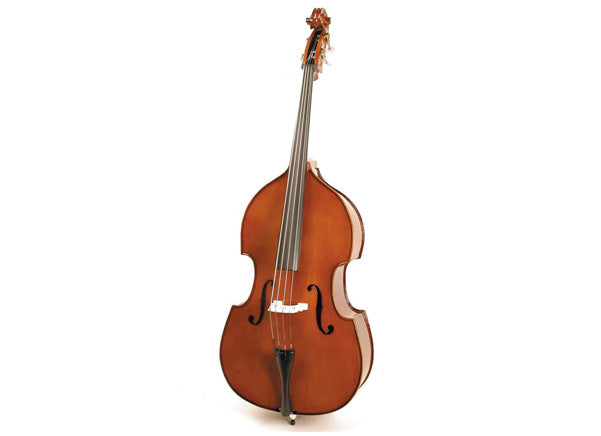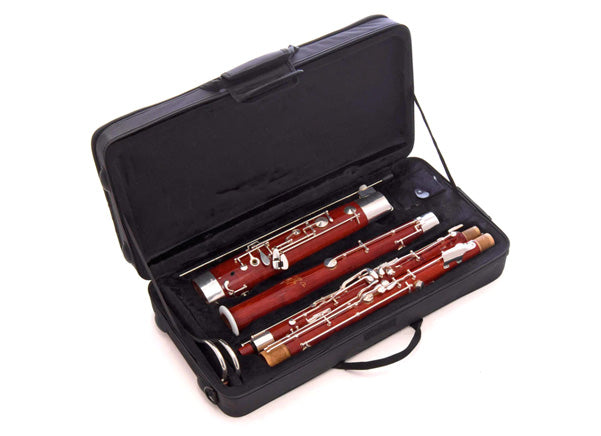Endangered Instruments - musical instruments that are at risk of becoming obsolete or extinct due to various factors such as declining opportunities, lack of skilled players, technological advancements, or cultural shifts.
One of the things which makes orchestral music so special is the variety of instruments involved. From the waves of strings at the front, to the might of the brass at the back and the clustered woodwind in between, the wide range of timbres and performing forces available makes for an alluring prospect for composers, conductors, and players alike. For young musicians, playing in orchestras and other large-scale ensembles is a real thrill, and the sense of being part of a large team with many different instrumental components can be truly inspiring.
Some of these instruments are ever-popular. Many, if not most youth orchestras are never short of violinists and flautists - often you can hardly fit them all into the rehearsal room! But some sections are not so blessed. This has led to the concept of the ‘endangered instrument’.[1]
Several factors contribute to the relative unpopularity of certain instruments:
- Price – some instruments are just unavoidably expensive to make. Maybe they are large and require lots of raw material, or just very intricate and require exceptional (and therefore expensive) craftsmanship to manufacture.
- Size & Weight – heavier instruments can be difficult to pick up and transport, even for adults, so no wonder some beginners are put off. And schools with limited space may struggle to store larger instruments.
- Difficulty – some instruments pick up a reputation for being harder to learn, and as a young musician that can be understandably intimidating. The idea of having to practice for weeks and weeks just to play a C major scale is no fun at all!
- Representation - Several more ‘niche’ instruments are increasingly hard to find, and many beginners are understandably dissuaded from learning them. It’s a vicious cycle; if you never see anyone else playing a euphonium, why bother learning it yourself?
As TakeItAway have pointed out, ‘There are several initiatives being run by music education hubs around the country to encourage minority instrument take-up, but like so many areas of music education, it often depends where you live’.[2] At Chamberlain Music, we are committed to supporting the continued existence of these endangered instruments everywhere, ensuring that students have opportunities to diverge from the musical norms and broaden their horizons. After all, there are plenty of great things about playing rare instruments! Proficiency in these can open up opportunities in ensembles that would otherwise be hard to come by. If you’re a beginner flautist then competition to get into the orchestra will be tough, but if you turn up with a bass clarinet or cor anglais, they’re unlikely to turn you down! Plus, if someone asks you what you play you’ll be able to wow them with ‘Euphonium!’, rather than just being yet another violinist (nothing against violinists, there are just a lot of them!).
Take, for example, the double bass. This majestic instrument is fundamental to any orchestra's low end, has some great solo repertoire and allows for seamless transition to jazz – any big band or trio needs a great bassist and many jazz enthusiasts prefer the upright bass to the electric one. It is an unusual instrument in that it offers the chance to traverse a mix of styles without always being stuck in large sections, meaning that players often sharpen their abilities relatively quickly in both improvisation and sight-reading. The variety of playing opportunities and the skills that can be picked up, means that the double bass can actually be a very attractive instrument to learn.

However, it does suffer from all four factors listed above. Crafted from high-quality wood and requiring skilled luthiers for construction, double basses tend to command a hefty price tag and their cumbersome size and weight can make them unwieldy for young musicians to handle, let alone transport. But there are reasonable solutions! Double basses, along with all orchestral string instruments, can be found in smaller sizes ideal for students. For example, the Antoni Debut is offered in ¼, ½ and ¾ sizes, and the Stentor Student I goes all the way down to 1/16 size! These basses play and sound just like a full size one, all whilst being much easier to manage for young novices.
Another casualty of these challenges is the French horn. Renowned for its rich, velvety tone, so much memorable classical repertoire has been written for the horn, and it has become increasingly popular with film composers over the last 50 years too, perhaps most famously used by John Williams in this magical moment from Jurassic Park.

Making French horns demands meticulous craftsmanship, pushing its price beyond the reach of many music organisations. Its complex tubing poses hurdles for manufacturers, while the complicated valve system presents a steep learning curve for rookies. To get around this, certain types of horn have been developed specifically for learners, which young players can use to get started before graduating to more extensive pieces of kit! These beginner instruments are ‘single’ horns, available in Bb and F, which do not feature the trigger valve found on double horns. This limits the range and flexibility of playing, but massively reduces costs and simplifies the initial learning process, enabling students to get a tune out of the instrument much more quickly.
The bassoon is another wonderful instrument that faces an uphill battle in attracting young players. On top of its distinctive look and sound, it features in a vast number of orchestral works as well as musical pit bands and chamber groups. Stravinsky even chose to open his momentous ‘Rite of Spring’ with a bassoon solo; getting to play that would be a feather in any musician’s cap!
Given their intricate keys and mechanisms, bassoons require precise assembly by skilled artisans, inherently driving up production costs. Their lengthy, weighty design further compounds accessibility issues for fledgling players and a reputation for difficulty can be intimidating too. However, once again there are ways around some of these issues, as John Packer demonstrates with the JP191 student 'short reach' bassoon, which is (you guessed it) shorter than a standard model, allowing for easy carrying, holding and fingering whilst still allowing a learner to get used to playing. It also packs up nice and small into its case, making it realistically more portable.

There is, nonetheless, an elephant in the room: These instruments I’ve mentioned are still relatively expensive. Paying around £1700 for a student instrument, as with the JP191, is undoubtedly a hefty price, so it’s important to be aware of some ways to reduce costs while still getting the rare instrument you want.
One such way is by utilizing the Assisted Instrument Purchase Scheme (AIPS), which allows you to save VAT when purchasing a musical instrument for your child when they are in full-time education at a Local Education Authority or Academy School, and which can make a massive difference if you’re considering buying an instrument as expensive as a bassoon or double bass!
It’s also worth checking out what second-hand options are out there; just be careful to buy through a reputable seller! We offer pre-owned orchestral strings, woodwind, and brass instruments, all of which are meticulously checked and serviced by professionals prior to dispatch.
The main way that students actually end up playing endangered instruments like these is by progressing onto them from more common ones. For example, many French hornists begin their musical journey on the trumpet before making the switch when already at a good level of competence. For bassoonists, the initial steps might be taken on a clarinet or oboe to get used to reed playing. Extensive ranges of cheap beginner instruments such as those offered by NUVO or pInstruments have made this even more feasible, letting beginners find their feet, and indeed their inspiration from as young as 5 years old before making that bigger, more high-stakes investment! For instance, the pBuzz is a useful tool to get students accustomed to the embouchure and physics of brass playing at extremely low cost, and more advanced plastic models like the pCornet or jHorn let them get used to fingering patterns as well. Similarly brilliant tools for woodwind beginners can be found in the form of the DooD and Clarineo, the latter allowing them to get a feel for reed playing which is essential for many woodwind instruments.
This article has highlighted a selection of endangered but several others including oboe, bass clarinet, euphonium and viola could all be classified as coming under the same term in the current musical climate. And whilst they might seem difficult to start for many reasons, they can also be exceptionally rewarding to learn, and if you do, you’ll likely become a tremendously valued member of many ensembles, and maybe even inspire the next generation of double bassists or bassoonists! If you’re interested in learning one of these rare gems, do get in touch with our sales team; they’ll be happy to help in your quest to maintain instrumental diversity!
[1] Claire Jackson (2021) ‘Species under threat: Endangered instruments’ in Music Teacher: https://www.musicteachermagazine.co.uk/features/article/species-under-threat-endangered-instruments
[2] TakeItAway (2019) ‘Would you consider playing an 'endangered' instrument? https://takeitaway.org.uk/endangered-instruments








